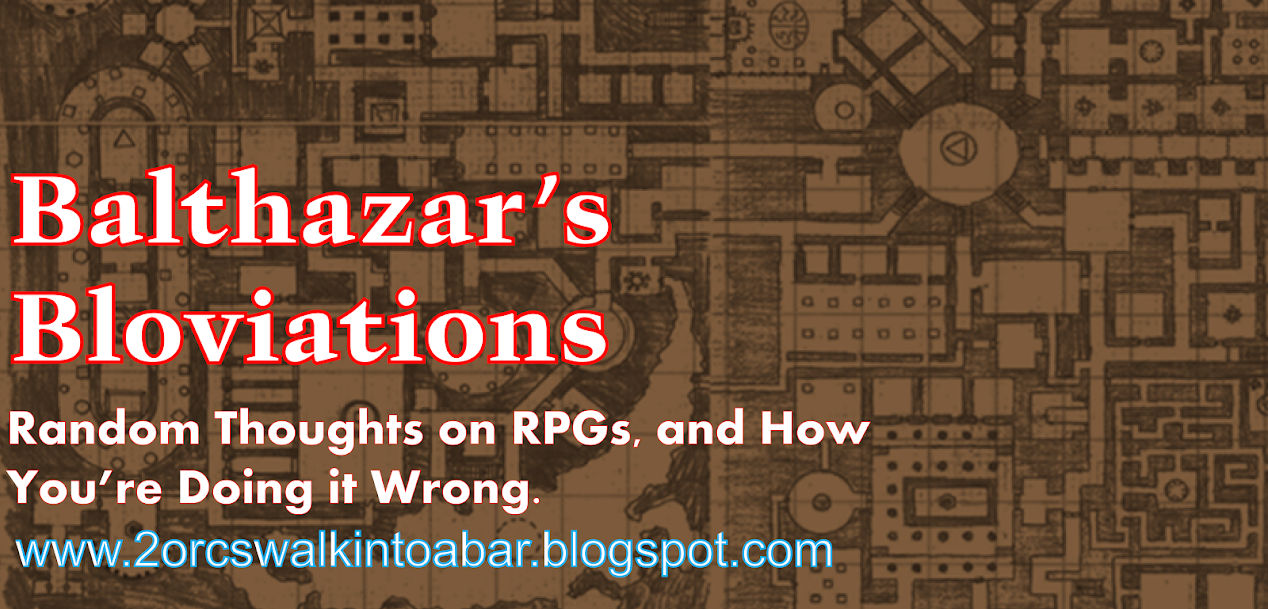The basic idea is fairly simple: A stone hallway with eight stone doors - four to the left, three to the right, and one on the far end. Each "door" is really just an archway with a stone wall beyond - no handle, hinges, or other obvious means of opening it.
"You see a hallway, something like this..."
Immediately to the right are a series of glowing runes, with a lever underneath each...
"Aha! Levers! They must open the doors. I wonder what those glowing symbols mean..."
To the left is a glowing riddle - because crazy-ass wizards just love to guard their treasure with a clever riddle, right? Who doesn't love a riddle?
"Great. Another $@&!ing Riddle..."
Solving the Riddle
Solving the riddle and exiting the hallway is relatively simple. The riddle tells you to "come ahead," but warns that you cannot "proceed forward." The answer is: you must walk backwards (as in, butt-first) down the hallway toward the door on the far side.
As soon as any PC walks backward for 20', the door on the far side of the hallway grinds open, and the PCs may proceed to whatever waits beyond. In this way, the owner of the dungeon can easily traverse the hallway without triggering any traps.
Don't Mess with the Levers!
The levers serve absolutely no purpose - other than as a trap to slay intruders. Pulling a lever "up" begins opening one of the side doorways.... either releasing a monster or springing a trap! Pulling a lever "down" slowly closes the same doorway.
Clever PCs will notice that there are eight doors but only seven levers - a sure sign that something fishy is going on. Of course, what adventurer can resist pulling on a lever in a dungeon?
Here's a quick guide to what I used for the levers in my game, going from left to right along the levers below...
Trident - Door #1 grinds open, revealing a metal wall full of holes - a spear trap that pincushions anyone standing in front of it when the door is fully open.
Cloud - Door #2 grinds open, revealing a metal wall full of holes - this time, they spray a thick, green poison gas into the hallway.
Gear - Door #3 grinds open, releasing a Slaughterstone Eviscerator (or some other clockwork monster of your choosing) from a small room. It immediately tries to slay anyone in the hallway.
"Yeah, that looks friendly..."
Spider - Door #4 grinds open, releasing a giant spider from a small room full of webbing and cocooned bodies.
Circle with Tentacles - Door #5 grinds open, releasing a hungry Chaos Beast, Roper, or other nasty tentacle monster.

"My only regret is that I have but one life to give to the monsters of this dungeon..."
Bull Horns - Door #6 grinds open, releasing an undead minotaur eager to kill you all...
"Well, hello there!"
(Cool Art by Karl Kopinski)
Freaky Mouth - Door #7 grinds open, releasing a gibbering mouther!
"Eye see you...get it? It's a pun!"
(More cool art by: Marcus Coltrin Awesome Artist!)
Epilogue: The Hall of Seven Dooms in Play
In my Neverwinter Nights game, the PCs took a job for the local wizards guild to retrieve a package from one of its members, a necromancer. Our heroes arrived at the tower to find a full-blown wizard-war raging (the necromancer was a jerk, and his numerous apprentices had decided it was time to murder him and divvy up his stuff). Of course, faced with a complex situation, the PCs pretty much decided to slaughter everyone and loot the tower...but that's a story for another day.
To my horror, upon entering the Hall of Seven Dooms, one of my players almost immediately (and out loud) guessed and blurted out the riddle's solution! Fortunately, his comrades scoffed that the answer could be so simple, and proceeded to start pulling various levers. Only after being stabbed, poisoned, and almost eaten, did they solve the puzzle and proceed to the necromancer's treasure room...
Like this? Make sure you check out The Cloning Machine Room and The Deathgate Puzzle Room. And you can be sure I'll write up at least a few more silly little dungeon rooms in the coming weeks.
Enjoy!
- Balthazar





























